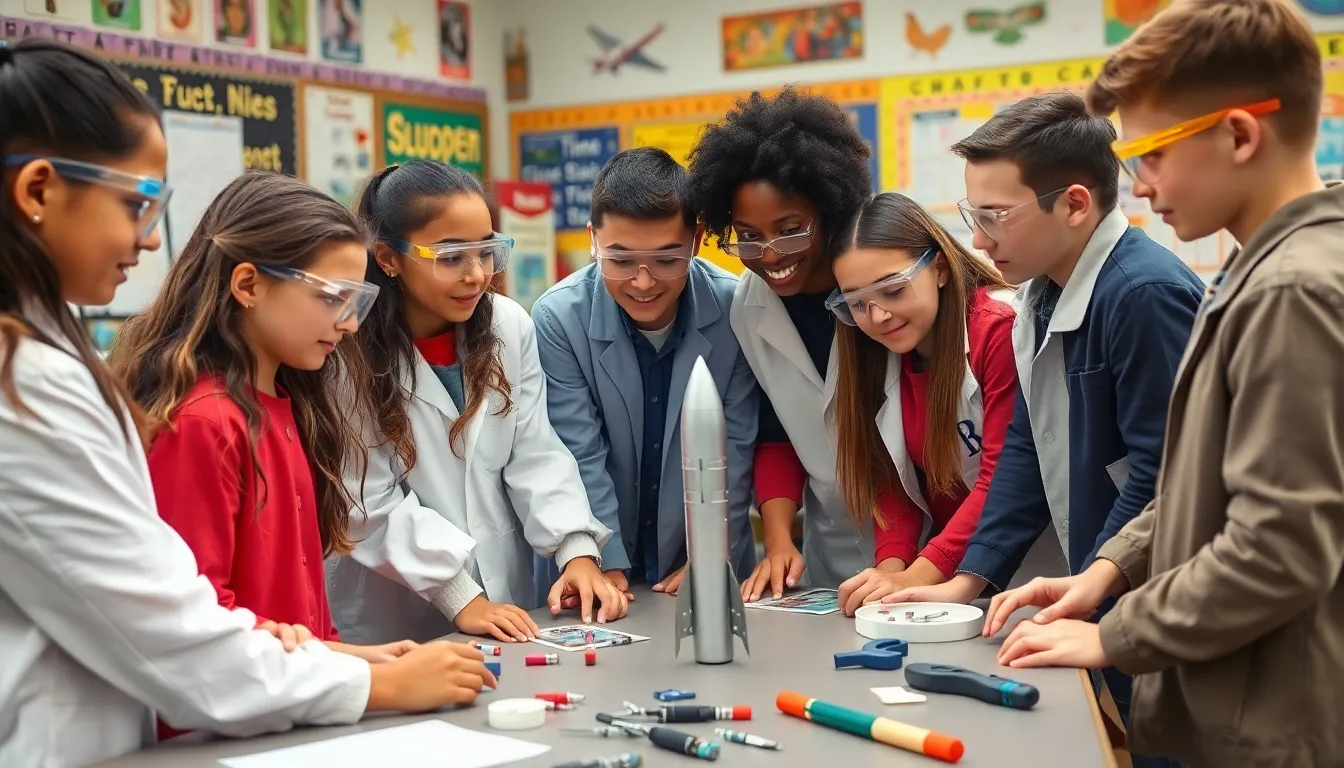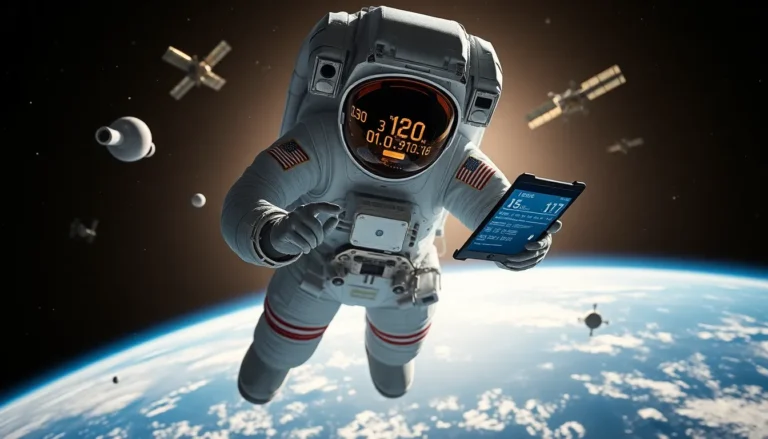In a universe filled with mysteries, space education programs are the rocket fuel propelling curious minds into the cosmos. Imagine kids trading their textbooks for telescopes and learning about black holes instead of just homework. These programs ignite a passion for science, technology, engineering, and math (STEM), all while making learning as exciting as a zero-gravity field trip.
Table of Contents
ToggleOverview of Space Education Programs
Space education programs play a crucial role in fostering interest in the sciences among youth. These programs utilize hands-on activities and real-world applications to engage students in STEM fields. Through courses and workshops, participants learn about topics such as astronomy, planetary science, and space exploration.
Participants often benefit from interactive learning opportunities, including access to telescopes and simulators. These tools help them investigate celestial bodies instead of relying solely on theoretical knowledge. Many programs include experiments that demonstrate principles of physics and engineering, enhancing understanding of complex concepts.
Institutions like NASA and local science centers offer a variety of programs tailored for different age groups. Students might explore robotics, participate in model rocket launches, or co-create projects that address space-related challenges. Engaging with experts from aerospace industries also provides invaluable insights into career paths in STEM.
Funding and support for these programs often come from government initiatives and private organizations. Such contributions help expand outreach efforts, allowing more students to participate. Community partnerships frequently enhance these programs, integrating local resources and expertise into the educational experience.
Overall, space education programs are essential for building a future generation that values curiosity and scientific inquiry. They inspire students to dream bigger and encourage them to pursue careers in fields that drive innovation and discovery.
Importance of Space Education

Space education programs play a crucial role in engaging young minds with the mysteries of the universe. These initiatives ignite curiosity and passion for science.
Fostering STEM Skills
Programs developed around space science enhance critical STEM skills for students. Participants work on projects that require problem-solving, creativity, and collaboration. Engaging with technology, they experiment with coding, engineering, and data analysis. Activities like launching model rockets or building robots provide practical experiences. Schools often partner with organizations like NASA to create hands-on learning environments. These programs also allow students to apply theoretical knowledge in real-world scenarios, making STEM subjects more accessible and exciting.
Inspiring Future Generations
Inspiration is a key benefit of space education initiatives. Through exposure to astronomy and space exploration, students envision careers in scientific fields. Programs create opportunities for students to connect with professionals in the space industry. Guest speakers often share their experiences, offering insights into STEM career possibilities. Witnessing real-world applications of science helps students understand the importance of their education. Such exposure cultivates a sense of wonder and motivates them to pursue science and technology careers, driving future innovation.
Types of Space Education Programs
Space education programs come in various forms, each designed to engage students and foster curiosity about the universe.
Formal Education Initiatives
Formal education initiatives incorporate space science into school curricula. Schools often partner with organizations like NASA to develop specialized courses. Students participate in structured classes covering astronomy and planetary science. Curriculum often includes practical projects, such as creating models of spacecraft or conducting experiments related to space. These initiatives provide a comprehensive learning experience, enhancing students’ understanding of STEM fields. Assessment typically includes projects, presentations, and participation in science fairs.
Informal Learning Opportunities
Informal learning opportunities complement traditional education. Community organizations, museums, and planetariums offer workshops and events focused on space exploration. Hands-on activities, like building model rockets or engaging in stargazing events, create exciting learning environments. Participants often interact with experts in the field, gaining insights and inspiration. These programs encourage exploration and curiosity about space through interactive experiences. Outreach programs frequently target underserved communities, ensuring wider access to educational materials and resources.
Key Organizations Involved in Space Education
Many organizations play vital roles in promoting space education. Key players include NASA and various international initiatives focused on STEM education.
NASA’s Education Programs
NASA provides a range of educational programs aimed at engaging students in space science and technology. The agency offers resources like the NASA Educational Resource Center, which supplies teachers with instructional materials. Additionally, initiatives such as the Artemis Next-Gen STEM project introduce learners to space missions planned for the future. Workshops and challenges allow students to engage with real NASA data, fostering hands-on learning experiences. NASA’s partnerships with educational institutions enhance outreach and provide students with unique opportunities to explore careers in the aerospace sector.
International Space Education Initiatives
Numerous international organizations contribute to space education on a global scale. The European Space Agency (ESA) leads initiatives like the ESA Education Office, promoting space science for students across Europe. Programs such as the Space Generation Advisory Council connect university students with experts in the field, emphasizing the importance of STEM education worldwide. Collaborations among countries allow for initiatives like the International Space Station’s educational outreach, which reaches classrooms globally. These efforts ensure that diverse groups of young learners can access space education, inspiring the next generation of scientists and engineers.
Success Stories and Impact
Space education programs inspire and empower students, leading to success stories that highlight their positive impact. Various initiatives demonstrate how these programs engage youth and foster interest in STEM fields.
Case Studies of Effective Programs
NASA’s Artemis Next-Gen STEM project introduces students to future space missions. Participating schools report increased engagement in science and technology. Programs like Project Blue Sky, an initiative by a community organization, focus on underserved populations, significantly enhancing STEM interest. Workshops on robotics and astronomy lead to skill development and knowledge retention among students. Data show that participants in these effective programs often pursue STEM careers, demonstrating the lasting influence of hands-on space education.
Testimonials from Participants
Students consistently share their excitement about space education programs. One participant remarked how building rockets sparked a deeper passion for engineering. Another stated that hands-on workshops made complex scientific concepts approachable. Teachers note enhanced classroom participation stemming from these programs. Their stories reflect a newfound confidence in tackling STEM challenges. Participants frequently mention wanting to inspire their peers through science and exploration. Overall, testimonials underline the transformative effects of space education on young learners.
Space education programs play a crucial role in shaping the future of science and technology. By engaging students in hands-on activities and real-world applications, these initiatives spark curiosity and inspire a passion for STEM fields. The collaborative nature of these programs nurtures critical skills that are essential for problem-solving and innovation.
With support from organizations like NASA and community partnerships, these programs reach diverse groups, ensuring that every student has the opportunity to explore the wonders of the universe. As young learners envision careers in science and technology, they become empowered to contribute to future discoveries. The impact of space education resonates far beyond the classroom, fostering a culture of inquiry and exploration that will drive progress for generations to come.





